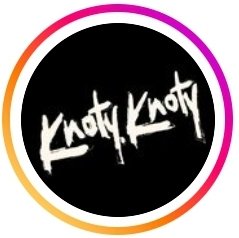This article is part of Harper’s Bazaar’s Great Motivators package, highlighting the essential voices that are keeping us inspired in 2024.
Over the last 30 years, Rick Owens has gone from cutting patterns for designer clothing in Southern California to building one of the most powerful brands in fashion. It’s powerful because of its profitability and clear aesthetic, but what actually sets it apart is the hyperspecific universe Owens has built—a space where all are welcome but freaks are preferred. The brand is at once ubiquitous and mysterious. Owens’s design codes focus on a sci-fi-ish Gothic beauty, one that is monochromatic and sculptural, the stuff of well-heeled (and well-dressed) punks.
Owens has remained independent in his business (which, according to The New York Times, had more than $140 million in revenue in 2023) and his vision, cultivating a massive fan base enraptured by his ability to eschew trends in favor of mind-bending, category-blending creativity. These fans are the ones who make Owens tick, who give him reason to keep pushing things further and, most importantly, make fashion more open. As he told Bazaar backstage after his Spring 2025 show in Paris this September, a show in which he invited hundreds of students, employees, and Owens die-hards to model, “Everybody talks about individuality being so important, but maybe it’s not. Maybe it’s solidarity.”
Many of his fans are his peers. There are designers like Gareth Pugh and Shayne Oliver, whose respect and reverence for Owens are unparalleled. Giorgio Armani name-checked Owens in an interview with Bazaar earlier this year. There’s also the next generation he’s motivating—the ones who will continue to raise the sartorial freak flag as high as possible.
Turkish-British designer Dilara Findokoglu, like Owens, has used fashion as both resistance and optimism, fighting against the grain while calling upon hope at the same time. For her latest collection, “Femme Vortex”, shown in London for the Fall 2024 season, Findokoglu created an alternate universe. She dressed models in pinstripe suits with snatched waists and Victorian corset dresses made to look like they were coming undone—armor for a post-patriarchal, anti-misogynistic world.
The designer feels a kind of simpatico energy with Owens. “I see him as a cult leader with the best intentions possible–a utopian prince,” she says. “I really admire his independence and the niche aesthetic that he made global. Rick created a home for people who felt excluded from stereotypical style.”
“Rick Owens has an extraordinary ability to create a sense of unity and identity among his followers,” says Duran Lantink, the founder and creative director of his eponymous label. “It’s as if he didn’t just create a new community, but rather tapped into an existing one, giving them the language of fashion they were yearning for.”
Based between Amsterdam and Paris, Lantink is someone who understands how to draw people in with the language of clothing—shapes, volumes, and fabrics that communicate a very specific idea adopted by a broad group of people. It’s in this sense that he feels an admiration for Owens, someone else wants to feed the desire of fashion die-hards but also inspire the neophytes. That’s how real vision is born, and as Lantink says, Owens’ community “proudly wears Rick Owens from head to toe, embracing the brand as part of their very essence.” He adds, “In today’s fashion landscape, it’s rare to see such brand loyalty, where people are so wholly dedicated to one designer’s vision that they curate their entire wardrobe around it.”
Raul Lopez, the founder and creative director of Luar, also sees Owens as an inspiration. So much of what Lopez does is based in self-reflection. His work—collections that draw upon themes like family and identity—is driven by the idea that individualism and self-expression are what give fashion life. “Rick Owens represents fearless individualism,” Lopez says of the designer. “He is constantly blending avant-garde aesthetics with a rebellious spirit. In the industry, he symbolizes the power of staying authentic and pushing boundaries without conforming to trends.”
If Lopez has learned anything from Owens, it’s “the power of staying true to your vision,” he says. “I admire his commitment to his aesthetic and his ability to build an empire while maintaining creative freedom.”

Brooke Bobb is the fashion news director at Harper’s Bazaar, working across print and digital platforms. Previously, she was a senior content editor at Amazon Fashion, and worked at Vogue Runway as senior fashion news writer.

